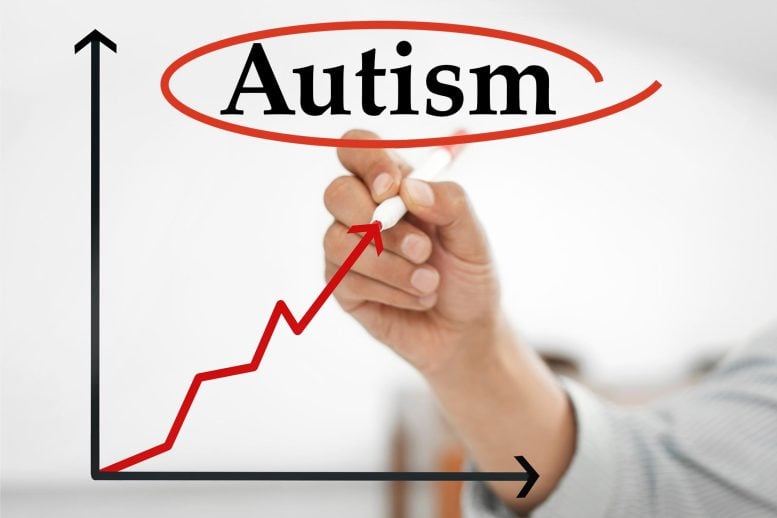Summary of Should We Be Concerned? Autism Diagnoses Continue To Skyrocket:
Autism diagnoses have increased significantly due to better awareness and broader definitions, reflecting improved detection rather than just an increase in cases. Once considered rare, autism now affects 1 in 36 children, sparking national discussions and remarks from public figures.
*****
Summary Bullet Points:
- Autism diagnoses are increasing, reflecting better awareness, not necessarily more cases.
- Broader definitions and improved detection contribute to the rise in numbers.
- The growing understanding shifts autism from a rare condition to one affecting 1 in 36 children.
- National discussions have emerged on the implications and interpretations of these statistics.
- Recognition of autism’s diversity enriches perspectives and fosters inclusion.
Article:
Have you ever noticed how conversations around autism have evolved over the years? It seems like more people than ever are talking about it, and you might be wondering, "Why the sudden buzz?" Well, the skyrocketing autism diagnoses are indeed grabbing attention, spreading understanding, and sparking conversations nationwide. Let’s unpack this phenomenon together.
Imagine stepping into a world where awareness illuminates previously shadowed corners. Autism, once a term shrouded in mystery and misinterpretation, now finds itself in the limelight, appreciated and acknowledged more than ever. Why? It boils down to awareness, broader definitions, and advancements in diagnostic techniques.
Rising Numbers: A Cause for Reflection, Not Alarm
Yes, the numbers are climbing. Autism now affects about 1 in 36 children, compared to rarer statistics a few decades ago. But before sounding the alarm, it’s crucial to understand what’s driving this increase. Experts emphasize that it’s less about an actual spike in cases and more about our perceptive lens getting a much-needed adjustment.
Picture a giant jigsaw puzzle. Earlier, we were only fitting in a few pieces, but now, with enhanced awareness and refined definitions, more pieces are finding their place. This doesn’t imply that more puzzles are being produced; rather, we’re just better at completing the ones right in front of us.
Broader Definitions: Casting a Wider Net
Let’s talk definitions. The criteria for diagnosing autism have evolved, encompassing a broader spectrum of behaviors and abilities. This isn’t to make things more complicated—no, no! It’s to ensure inclusivity and recognition of autism’s rich diversity. The spectrum is vast, and everyone’s journey within it is beautifully unique.
The Diagnostic and Statistical Manual of Mental Disorders (DSM), which guides medical practitioners, has expanded its criteria over time. This isn’t just bureaucratic tinkering—it’s a comprehensive attempt to capture the myriad ways autism can manifest. Each criterion aims to recognize differences in social interaction, communication, and behavior patterns with greater precision.
Improved Detection: Seeing with New Eyes
Now, let’s delve into detection. As society becomes more enlightened, tools and methodologies sharpen. Professionals are catching symptoms earlier and more accurately, allowing for swift interventions. Early detection can make a world of difference, and these developments mean more children receive the support they need sooner.
Research and technology are partners in this progress. From developmental screenings to advanced neuroimaging, the arsenal of diagnostic tools has expanded, offering insights that were unimaginable a few decades ago.
Public Discourse: Sparking a National Conversation
With these burgeoning statistics, autism has ventured into the public discourse. Former public figures and policymakers have weighed in—sometimes stirring controversy, sometimes enlightening. This dialogue is critical. It stretches beyond numbers and nudges us to reflect on societal attitudes, resource allocation, and educational approaches.
Engaging in these conversations can feel like untangling a ball of yarn—it’s complex, sometimes messy, but ultimately rewarding as it uncovers layers of understanding and empathy. It’s not about fearmongering; it’s about education and empowerment.
Diversity and Inclusion: Embracing the Spectrum
Now, let’s celebrate diversity. Autism is not a one-size-fits-all label; it’s an umbrella covering a kaleidoscope of experiences and abilities. Each individual adds a different hue to the spectrum, enriching our collective tapestry.
Understanding this variety fosters compassion, authenticity, and acceptance. It challenges stereotypes and invites a fresh outlook where every story matters. Society is shifting—slowly, perhaps—but undeniably toward a more inclusive environment.
Navigating the Path Ahead: From Awareness to Action
What’s the way forward? Awareness is the first step, sure, but action is the heartbeat. Whether it’s advocating for better resources, enhancing educational frameworks, or fostering supportive communities, every step counts.
Let’s imagine a world where awareness seamlessly translates into action—where support systems are robust, where differences are celebrated, not merely tolerated. A place where everyone feels seen, heard, and valued.
Reflection: What Can We Do?
Bringing it all together, ask yourself: what role do you play in this unfolding narrative? Whether you’re a parent, educator, advocate, or just someone intrigued by the topic, there’s space for your unique contribution.
Consider volunteering, educating others, or simply having conversations that challenge perceptions. Small actions can ripple into significant change. The more you know, the better equipped you are to make a difference.
The Human Element: Sharing Stories
Let’s not forget the power of sharing stories. By listening to lived experiences, we tap into the essence of what being human means. Stories break down barriers, cultivate empathy, and resonate across divides.
Engage with experiences different from your own. Listen deeply, speak thoughtfully. In doing so, you weave connections that transcend statistics and definitions.
Conclusion: Horizons of Hope
As we continue this journey of understanding, remember that knowledge dispels fear, and compassion bridges divides. The rising autism diagnosis rates aren’t a cause for alarm but a beacon of growing insight and empathy.
Let’s gaze forward with hope, curiosity, and determination. Together, we can unravel complexities and craft a world where every individual, on the spectrum or not, thrives. Here’s to embracing the fullness of every story, one enlightened step at a time.
Now, take a moment. Reflect on what you’ve learned. How will you contribute to this tapestry of understanding and action? The adventure awaits, filled with opportunities to grow, learn, and make an everlasting impact.
